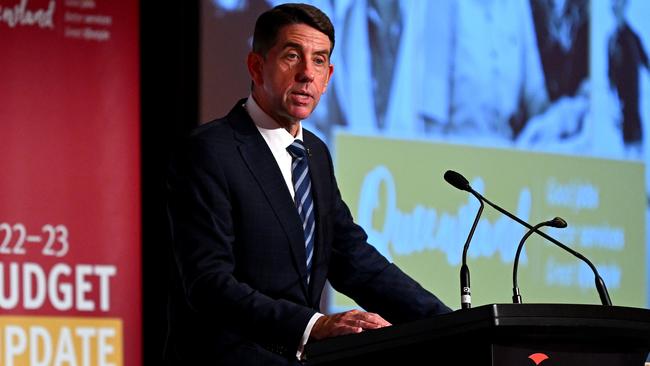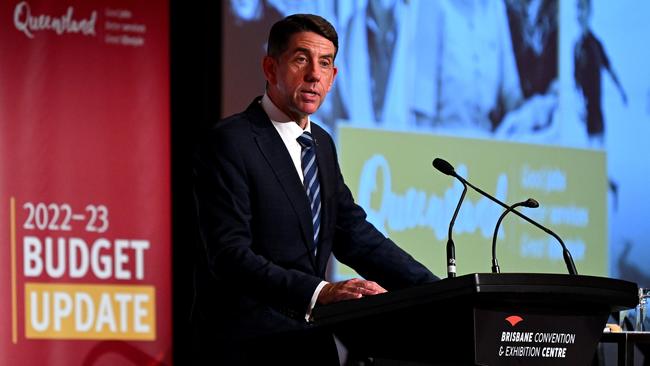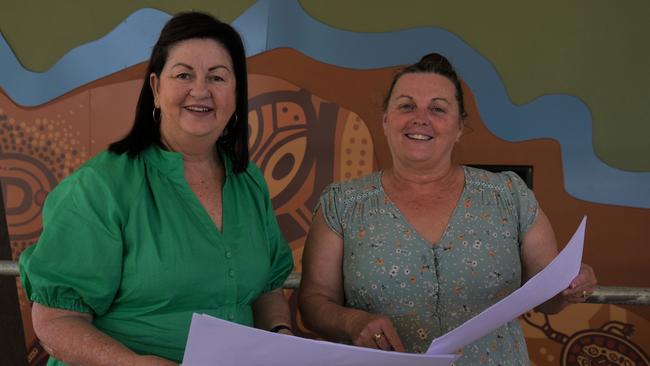Cameron Dick pledges $3bn royalty boon for regional Qld in 2022-23 budget update
Central Queensland’s mining towns could ride a new $3bn spending wave after the state government pledged to funnel ballooning coal royalties back to the regions. But there’s a fresh row over exactly how that will work.

Business
Don't miss out on the headlines from Business. Followed categories will be added to My News.
Central Queensland’s mining towns could ride a new $3bn spending wave after the state government pledged to funnel ballooning coal royalties back to the regions.
Treasurer Cameron Dick’s budget update revealed $2.95bn in additional revenue drawn from the new royalty tiers he introduced in June, far above the initial $765m projection, and he has promised to return the money to towns like Moranbah and Mackay.
“These new royalties that were earned in regional Queensland will not leave regional Queensland,” he said in a speech to the Queensland Media Club on Wednesday.
“Queenslanders deserve their fair share and they will receive it.”
The $3bn will be held within a consolidated fund and managed by the Queensland Investment Corporation, a government-owned investment body.

When a regional project is identified and meets feasibility criteria, money will be then allocated from the fund to the project.
The budget’s regional focus appears to undercut arguments from resources executives and the Queensland Resources Council, which has claimed the royalties will squeeze Central Queensland’s coal communities for the benefit of Southeast Queensland.
“The government’s royalty tax is raiding the Bowen Basin to fund projects in Brisbane,” a resource industry executive, who wished to remain anonymous, said last month.
“This is a tax on Mackay, Moranbah, Rockhampton and all Central Queensland communities.”
QRC chief executive Ian Macfarlane said this week the $3bn figure was misleading and the government would only distribute money thrown off by the return on the capital.
“It (the $3bn) is not going back into the regions, it is going into a fund,” he said.
“What is going back into the regions is the earnings from the fund each year.
“He (Treasurer Cameron Dick) is setting up an investment fund and I assume that is what he is going to do.”
A spokesman for the treasurer said this was incorrect.
“It is not an investment fund, it is there for the capital to be spent,” he said.
The new royalty regime adds three tiers to the existing tiered structure, with companies now paying 40 per cent on the dollar when coal prices exceed $300.
This means the state’s resources firms are now paying the highest top rate of tax in the world, which the QRC argues will degrade long-term investment in the sector.
“We are already seeing major investors like Japan and BHP and Peabody casting doubt on investing in new projects after the Queensland government increased the royalty without any consultation,” Mr Macfarlane said.
Coal is currently trading at more than $500 per tonne, driven by a global energy crunch that has escalated following Russian president Vladimir Putin’s decision to invade Ukraine.
Across the 2022-23 financial year, the new regime is expected to deliver $10.7bn to the treasury.

The budget update also reaffirms a range of separate funding commitments to regional Queenslanders, including $100m for a new investment fund geared at critical minerals and another $120m for the Resources Community Infrastructure Fund.
There’s also an extra $1.8m in state funding for the Phillips Creek Bridge near Dysart and “priority consideration” for the proposed Isaac Resource Excellence Hub.
Isaac Mayor Anne Baker is jubilant.
“This announcement follows critical new Moranbah Hospital investment to service the Bowen and Galilee basins, the beating heart of Queensland’s resources,” she said.
“We are absolutely thrilled to see the return of royalties especially when Isaac coal mines continue to support the growth and prosperity of Queensland and the nation.”





